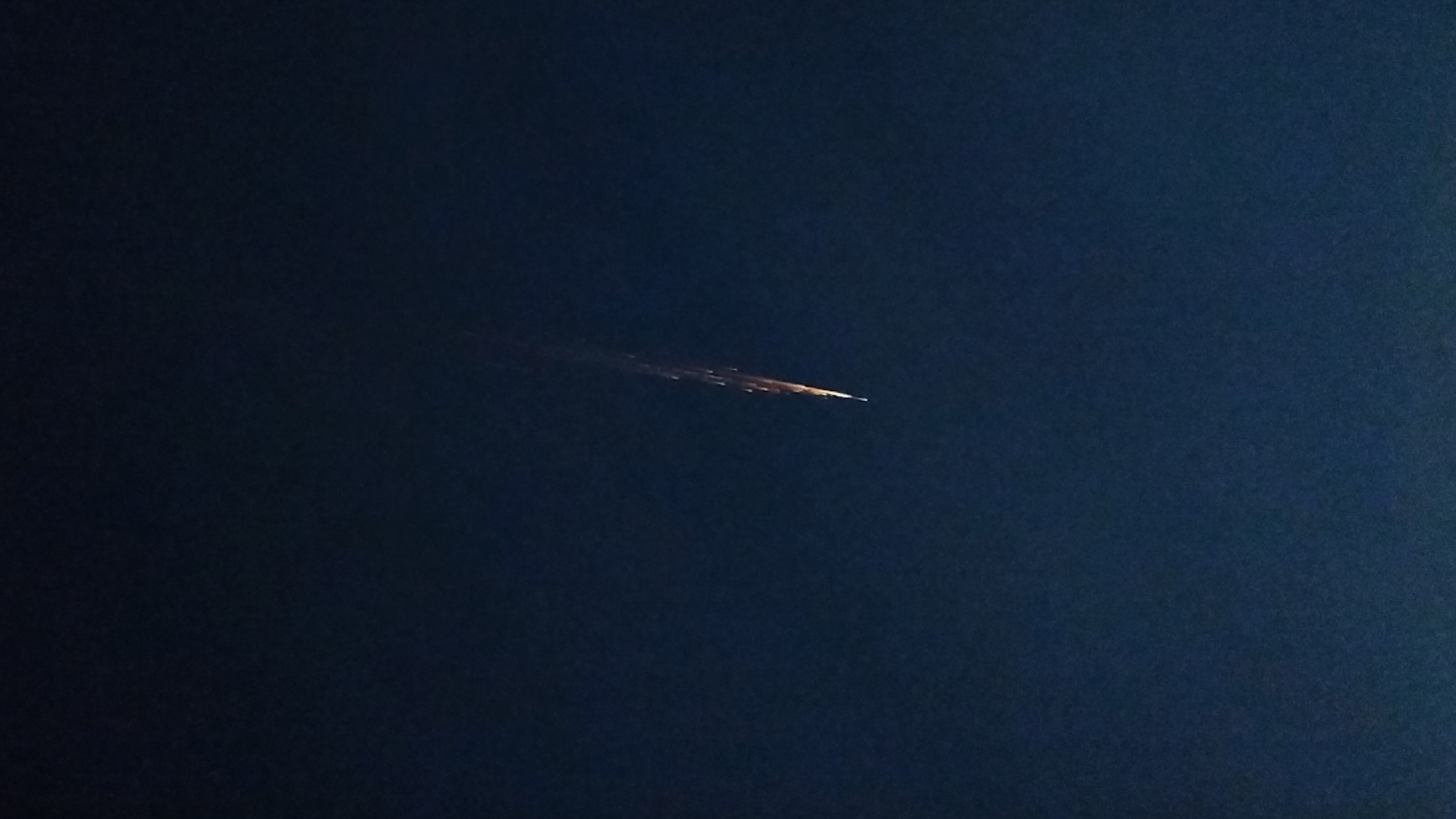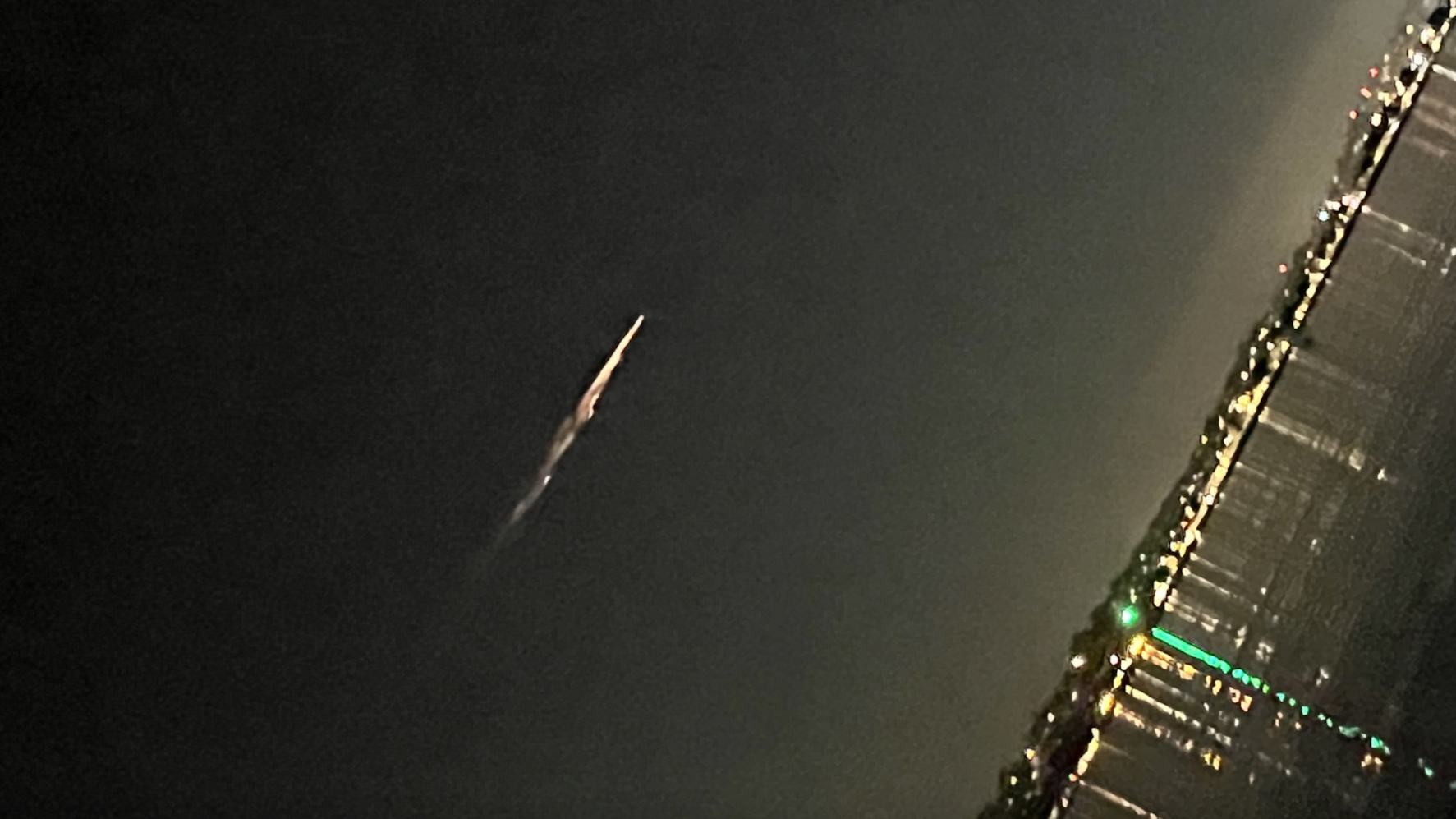
A big piece of Chinese space junk crashed to Earth over Southern California early Tuesday morning (April 2), putting on quite a show for observers in the Golden State.
The fall created a blazing fireball witnessed by people from the Sacramento area all the way down to San Diego, according to the American Meteor Society (AMS). As of Tuesday afternoon, 81 people had reported sightings of the event to the AMS.
The hunk of space debris was the orbital module of China's Shenzhou 15 spacecraft, according to astrophysicist and satellite tracker Jonathan McDowell. It had been up there for a while; Shenzhou 15 launched three astronauts to the nation's Tiangong space station in November 2022.
The Shenzhou orbital module, which weighs about 3,300 pounds (1,500 kilograms), provides extra room for astronauts and science experiments in space. It's not designed to come back to Earth safely at the end of its mission; the Shenzhou reentry module is built to do that, with astronauts on board.
Related: 6 types of objects that could cause a space debris apocalypse

Of course, most folks who saw the fireball streak across the sky around 1:40 a.m. local California time (4:40 a.m. EDT; 0840 GMT) didn't know what it was.
Some thought it may have been a piece of SpaceX hardware, which was a reasonable guess: A Falcon 9 rocket had launched 22 of the company's Starlink internet satellites from Vandenberg Space Force Base on California's central coast about six hours earlier.
The burning debris couldn't have been the Falcon 9's first stage; that piece of hardware lands safely after launch and is reused. But the workhorse rocket's upper stage is disposable.

The Shenzhou 15 orbital module was hardly the first big piece of Chinese space junk to crash back to Earth in dramatic fashion, nor was it the biggest.
The 23-ton (21-metric-ton) core stage of the nation's powerful Long March 5B rocket, whose launches helped build Tiangong, routinely fall to Earth in an uncontrolled fashion.
These debris crashes have drawn criticism from a variety of people in the space community, including the heads of NASA and the European Space Agency, who have decried them as irresponsible and potentially dangerous.







